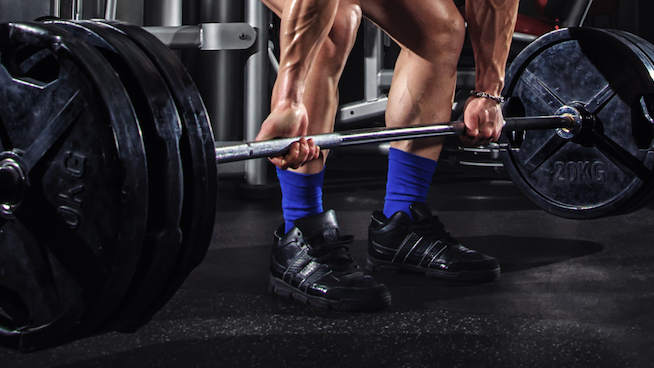Great discussion. Both of you may be winning your own argument as it seems both of you are trying to make different points. Of course I'm pro deadlift as I've been training it for 40 years and have trained performance based athletes with deadlifts for over 20 years. If you have a moment give this article a read. I have met Flaherty at a conference and spoken to him on the phone. He doesn't implement anything that he can't measure the results of. I think there is enough in this article to both prove and disprove your arguments Sangheilios. Like why they use the hex bar supports your risk argument. But that its only for powerlifters and strongmen isn't supported by the results Ryan has produced. That is unless you say hex bar and straight have zero correlation.
To get faster, you need to get stronger. This may fly in the face of everything you’ve heard about speed […]

www.stack.com
I totally agree that strength, or at least pursuing it, is incredibly important for athletes, general fitness, etc. Just about anyone today that knows anything is aware that you should be following a well rounded lifting routine if you are an athlete. It's actually kind of comical to see that some believe it doesn't make a difference, though I'm disregarding a typical bro split you see at an average gym and something that is more athletic/full body in nature. Strength obviously isn't the only factor, you also need to have a good degree of mobility/flexibility, conditioning, etc.
Going back to deadlifts and that article specifically. The trap bar deadlift is definitely much safer on the lower back compared to a conventional deadlift, as it has the weight centered with the body instead of in front. I definitely agree with this part and I do agree with the idea that if your strength to weight ratio is improved you will find that it may help with your general athleticism. With that said, it's not entirely that black and white and you need to look at it from more of an individual perspective. I guarantee you that Usain Bolt, the best Sprinter in the world, was/is not all that strong at this particular movement. On the flip side, I guarantee you that there are people who are incredibly strong at this movement and aren't all that fast. I think the take home, from my perspective as I've seen it, is an athlete should be focusing on improving within their parameters and not comparing their lifting numbers to someone else. Some people have specific body types/structures that are advantageous or disadvantageous for certain lifts/movements. Look at the guys you see in the olympic weightlifting world, you'll see that they often have quite short femurs relative to their bodies. These people are literally built to squat lol. In contrast, imagine taking someone with long legs relative to their frame, they suck at squatting. There's also a point of diminishing returns, chasing another 10% on a certain lift is not going to necessarily correlate to some magical increase in your 40 time, etc. At a certain point, you have to start heavily focusing on training for that in order to see noticeable improvements, which would detract from other elements in your routine.
Here's a good example of what I'm talking about with that. I was doing a lot of hill sprints and sprints on a track, 2-3x per week, and decided to try out running a mile afterwards to see how that would go, at first it was hard to do it in 7 minutes after that workout. I decided to stick with that and ran a mile after my sprint work 3 days per week, in 2 weeks I was down to a little over 6 minutes. Now, if I had decided to really try to focus on that goal, say hit a 5 minute mile, I'd have to start doing a lot of longer runs. This would have detracted from my other training.
Personal anecdotal story. Years ago I was doing lower body work with stuff like glute ham raises, hip thrusts, lunges, sleds, hill sprints, etc. I tried doing a deadlift and was able to pull 405 with a mixed grip conventional style, it was heavy but not a complete grinder. I decided to do deadlifts once per week and within 2 months I was able to pull 405 for 10 reps and 445 for 5 reps. My bodyweight more or less stayed the same, so I didn't gain much muscle mass, if any, but by doing this lift regularly I was able to make huge improvements in my numbers. However, I found that I didn't like the way it made my body feel, I always felt like my lower back was tight and that my hips/glutes didn't fire like they usually did......so I just decided to not continue doing them. I still had a solid base without doing this exercise at all, so it's not necessary to do them regularly. I also don't like trap bar deadlifts because they'd irritate my knees, just never felt natural to me.
What I'm getting at is there are a large variety of exercises that can work quite well and that nothing is really necessary. Again, I feel deadlifts are a bit overrated and that there are better alternatives for many people. If I was a sprinter, the best thing you could incorporate is sled work of various types, hands down the best lower body exercise there is in my honest opinion. The thing is, there is no reason why you have to just stick to one thing. If someone likes to deadlift and doesn't have issues with them then go for it, I personally just don't believe people should feel they are 100% necessary.





